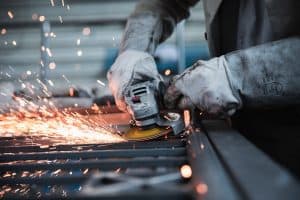Line balancing is one of the most effective ways to make your work environment more efficient. The term line balancing has become a bit of a buzzword in the manufacturing industry, but what exactly does it mean? What are some ways that you can improve your line balance? In this article, we’ll cover all of these questions and more so that you can create a culture of efficiency within your organization.
What is line balancing?
Line balancing is a process of optimizing the flow of work through a manufacturing process. It’s about creating a more efficient and effective workflow, which can be done at the individual station level or at the end of the line.
Line balancing can help you reduce waste by ensuring that every step in your production is working efficiently. This will allow you to produce more with less effort, leading to better quality products for your customers and greater profits for yourself!
The importance of line balancing
Line balancing is important for your business because it creates efficiency. Efficiency is a key component of productivity, which means you can get more done in less time and with fewer resources. As a result, you’ll be able to produce more products or services at a lower cost–and make more money!
Line balancing also benefits your employees by giving them the opportunity to learn new skills that will help them advance within the company (or find another job). It also makes them feel like they’re part of something bigger than themselves: when everyone contributes their best efforts toward one goal, there’s an increased sense of teamwork and camaraderie that boosts morale throughout an organization. And this positive energy trickles down into other areas such as customer service–customers love buying from happy people who are proud of their work!
Why do we need to balance the line?
- Improves efficiency: Line balancing is one way to improve your company’s overall efficiency. This can be achieved through the reduction of waste, providing better customer service and reducing employee turnover.
- Reduces waste: As we saw earlier in this article, meeting demand is a key component to operating a successful business model. However, if you don’t have enough resources available for your customers or employees then you may end up producing products that are not needed or needlessly wasting resources like packaging materials or transportation costs.
- Increases customer satisfaction: When people feel like they’re getting what they need when they visit their local restaurant or shop at Walmart (or any other type of retail store), it makes them feel satisfied with their purchase decision – which leads us back into our second point about reducing unnecessary costs associated with production lines.
How do I know if my line is balanced?
A balanced line is one that can produce the required output in the least amount of time, with minimal waste and maximum efficiency. To determine if your production lines are balanced, you should consider three factors:
- Time spent on each task. The less time spent on each step of the process, the more efficient it will be.
- Amount of waste produced by each task. If there is too much scrap or rework happening within a given process step, then this may indicate an issue with how efficiently that particular step has been designed or implemented.
- Number of operators needed to complete each task in order for it to be considered “balanced” (or “unbalanced”). For example: if one operator can complete all tasks associated with making widgets while another operator can only complete half those tasks because he/she must wait for something else before starting work again–then we would say that these two processes are unbalanced because they require different amounts of labor input at various stages throughout their cycle times (which affects overall productivity).
What are some ways that I can improve my line balance?
The first step to improving your line balance is identifying the biggest bottlenecks. To do this, you’ll use a line balancing matrix (see below). Once you’ve identified these bottlenecks, it’s time to make some changes!
The first thing you should do is think about what makes for an ideal process in terms of speed and efficiency:
- Is there anything that could be done faster?
- Are any steps unnecessarily slow or complicated?
- Are there any unnecessary steps altogether?
If so, consider making those changes immediately–they will likely have the biggest impact on improving your line balancing. You can also try using production line balancing software like LineView which helps identify areas where improvement is needed automatically based on data from previous shifts/months/years–these tools are especially useful when trying out new processes because they show exactly how effective they’ve been over time without having someone manually compile all that information themselves!
Line balancing is one of the most effective ways to make your work environment more efficient.
Line balancing is one of the most effective ways to make your work environment more efficient. By improving the flow of people and materials through different stages of production, you can reduce waste, increase productivity and make your company more profitable.
Line balancing is an ongoing process that requires constant attention to keep up with changes in demand or production requirements.
Conclusion
Operational excellence is an important goal for any business, but it’s not easy to achieve. There are many factors that can negatively impact your ability to deliver on time and with the quality you promised. For example, poor planning or inefficient processes can slow down production, while human error and poor communication among team members can lead to mistakes that need correcting before they cause additional problems. This type of scenario happens frequently when there is little attention paid to improving efficiency throughout an organization–and in fact, it may even be happening right now at your company!




